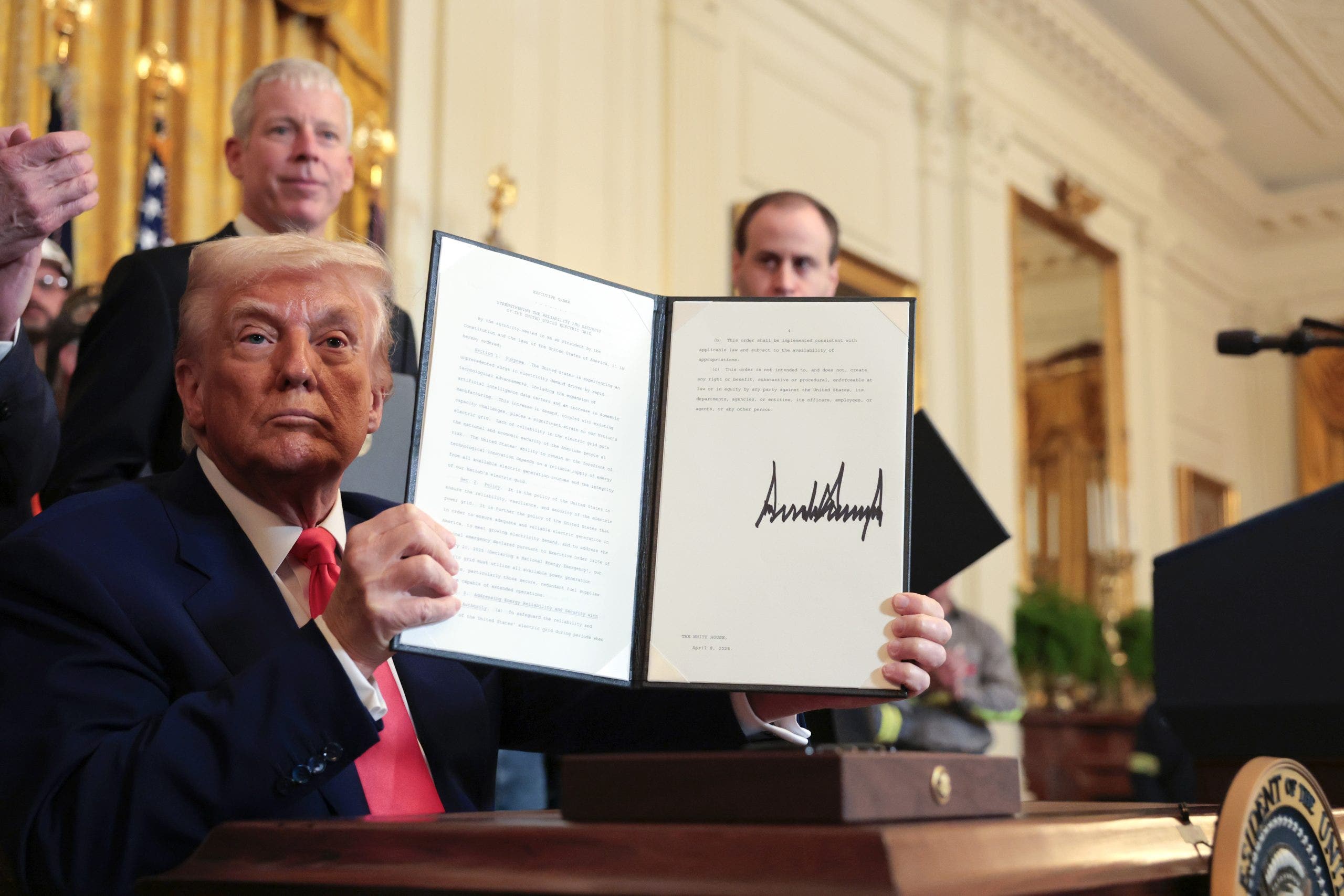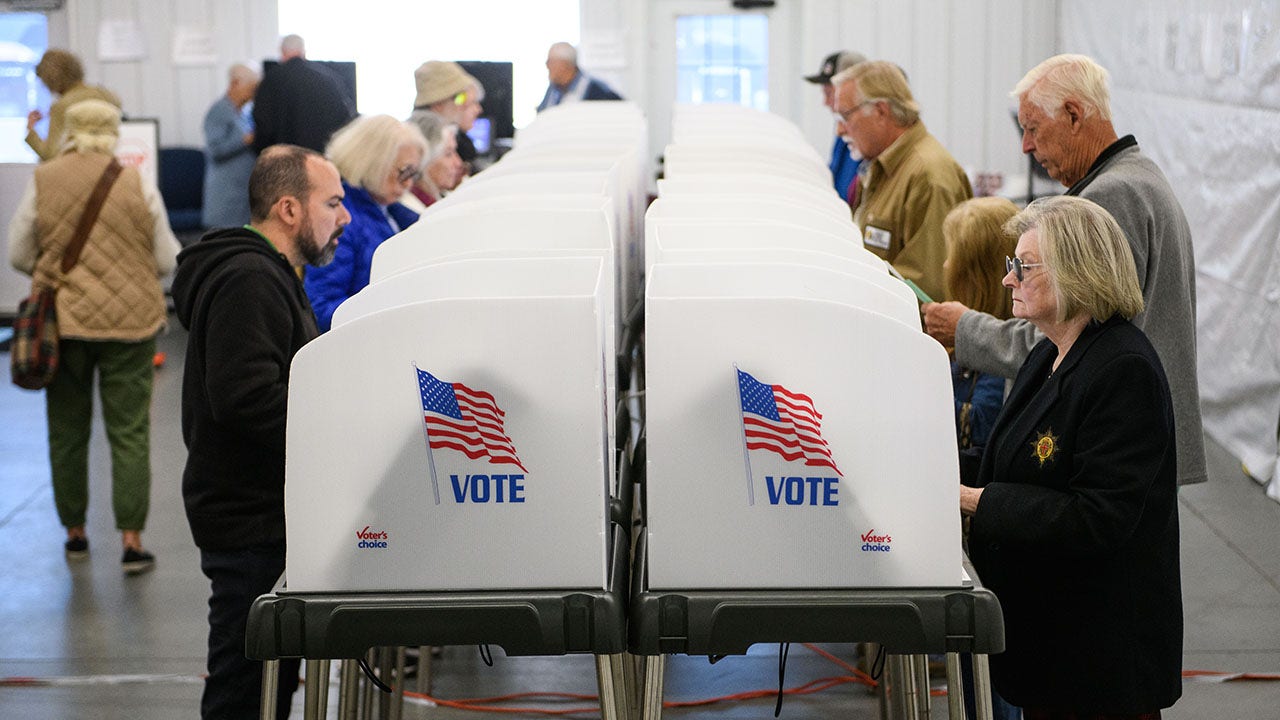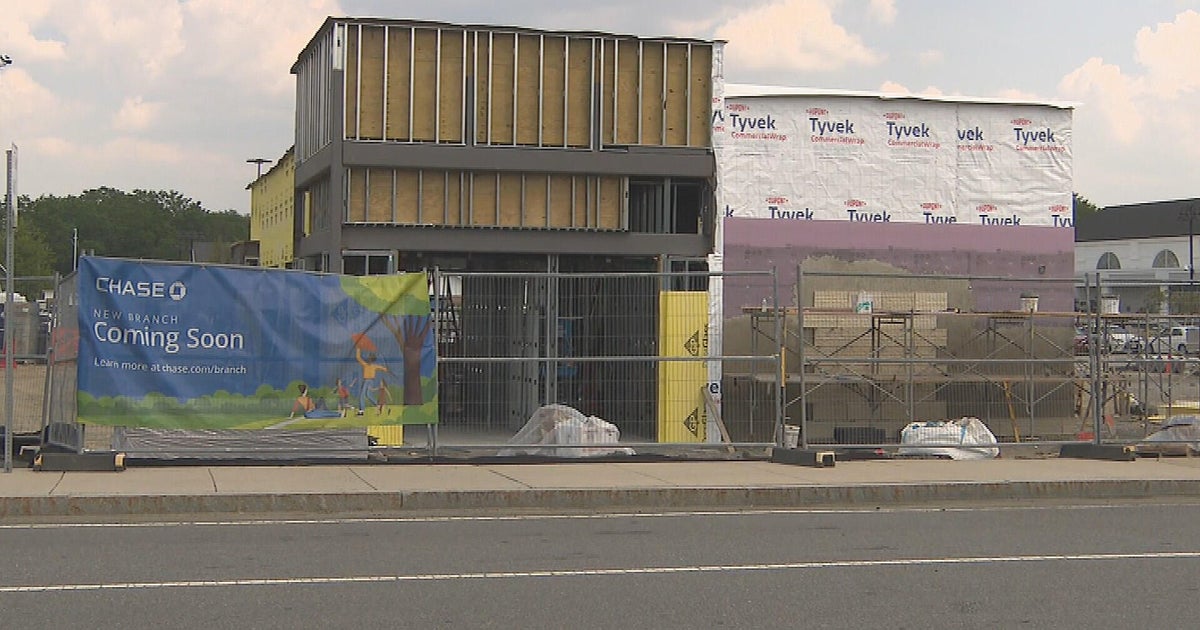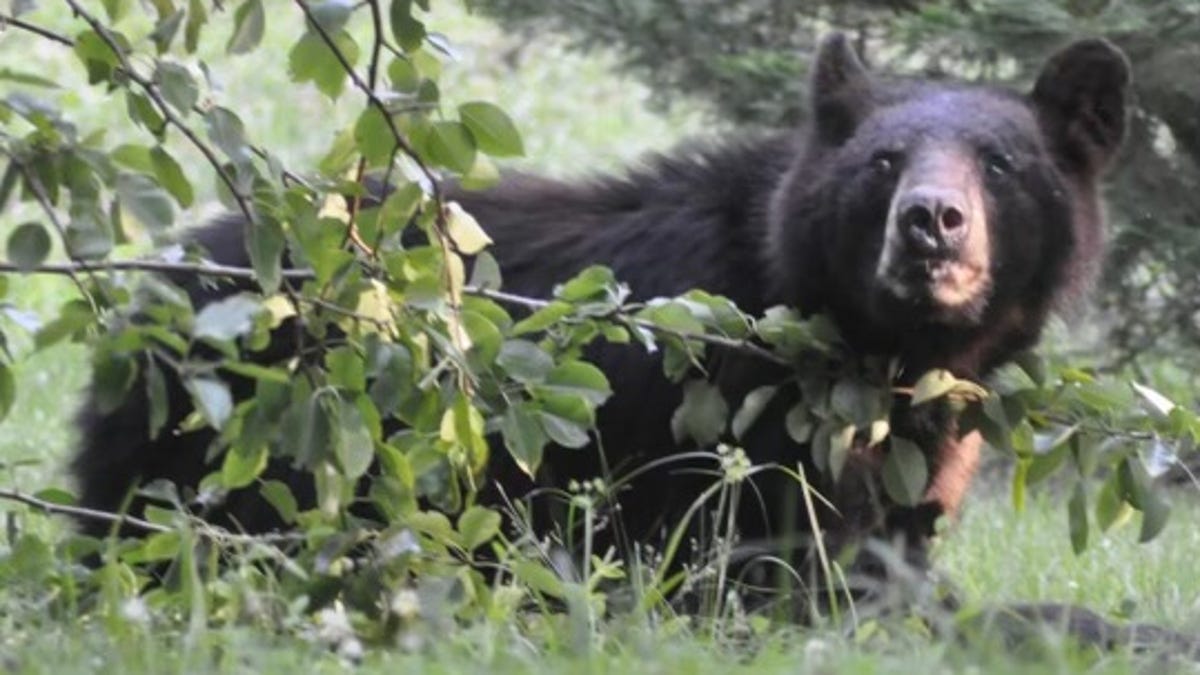Alaska
Alaska’s student absenteeism problem got worse after school pandemic closures, following national trend

Alaska students were absent from school at a higher rate than in any other state during the 2021-2022 school year, according to an analysis out Friday from the Associated Press.
The AP says nearly half of Alaska students missed at least 10 percent of the school year, which is considered chronic absenteeism. And the analysis, in collaboration with a Stanford University education professor, shows chronic absenteeism increased across the country as schools reopened for in-person learning following closures prompted by the coronavirus pandemic.
Becky Bohrer with the Associated Press in Alaska reported on the story in-state, along with AP national education reporter Bianca Vazquez Toness.
Listen:
[Sign up for Alaska Public Media’s daily newsletter to get our top stories delivered to your inbox.]
The following transcript has been lightly edited for clarity.
Vazquez Toness: So chronic absenteeism is sort of a red flag that something’s wrong, either at school or at home. Perhaps a child is sick, like really physically ill, (or) having mental health problems. Perhaps there’s insecurity, housing insecurity. Perhaps there is homelessness. Perhaps that family doesn’t feel comfortable in the school, or the child doesn’t connect with the curriculum that’s being offered. So we’ve found in looking at other states that this problem is worse among Latinos and Black and low-income students. And in Alaska, this is worse among Native students.
Casey Grove: Becky, did you talk to folks here in Alaska? And what did they tell you about this?
Becky Bohrer: Well, we talked to a number of people. I spoke with a teacher, for example, in Hoonah. And she said one of her experiences is that the school calendar doesn’t align well with the subsistence season, that it’s important for families to have their kids with them doing subsistence activities. And school is underway before a lot of those activities are even finished. She said before even a deer might be in the fridge, they’re already starting school. She mentioned that there are children who, in some families, are being raised by grandparents or great grandparents who carry historical trauma with them from terrible boarding school experiences within their families. There’s also situations where we have a lot of seasonal economies here. And maybe in the wintertime, families are taking their vacations. You know, those sorts of things don’t align with the school schedule. But I should also note that this is an issue that state officials have been talking about for a number of years and an issue that’s come up in school districts that right now they’re grappling with the question, “What do we do?”
CG: Yeah. Some of those things seem like longstanding issues, and like you said, the state school administrators have been talking about that for a while. But were there things with the pandemic that exacerbated those things or, I guess, added to them that you saw in your reporting?
BVT: Nationally, in talking to families and talking to educators, we heard two different trends that seem to have made this worse. One is that during the time of remote learning, relationships with schools, between schools and families and students, became frayed, right? People didn’t see each other. And perhaps there was tension around the way school was being delivered or not delivered, right? And then there was also school educators and school leaders telling parents that school during that time could happen anywhere, anytime. We had to be creative and flexible, and we could learn online or learn in our backyards or wherever. And families got used to that. And there hasn’t been sort of an explicit kind of education or re-education campaign to, I guess, sell parents on the importance of school again. And there also, in some places, you know, haven’t been deliberate efforts to rebuild the relationships.
CG: When you talk to the school districts, what did they say they’re actually trying to do to confront this problem?
BVT: Well, there are a lot of school districts out there, right? So it really depends on the school or the school district. There are a lot of things that some folks have done, from sending fliers or letters home, reminding people that school is important and telling them, you know, their child has missed, say, five days at the beginning of school in the first month, you know, “This is a problem, please get your your child back.” I’ve heard of some districts doing something called empathy interviews, where they, you know, approach the family in a gentle way and try to understand better what the obstacles are to getting to school. Some have also tried to rebuild relationships in some ways, but there’s still a lot of schools that haven’t, you know, started the types of parties and sort of community building activities that happened before school closed, and those things are important so that families feel like they’re a part of the community like they know their teachers and they know the principles. And when those things go away, it’s much easier to have conflict and for, sort of, small problems to alienate a parent and a student.
CG: OK, so now I’m going to jump in a time machine, and I’m going to go back to my teenage self. And I used to skip school, I will admit it. So, beep, boop, I’m in my time machine, I popped out, my back doesn’t hurt anymore. Why is this a problem? I understand that, you know, this is beyond just single teenager deciding to skip school. There are many other reasons that kids don’t go to school, or there are reasons that they stay home to help their family and different things like that. But for me, teenage self, why do we care?
BVT: Well, you know, I don’t know much about what you were like as a teenager, or the socio economic conditions of your family or what was going on there. But we know that for a lot of kids, you know, who don’t have parents who can put food on the table, or don’t have advanced degrees, that it’s really important to be in school, right? You learn how to read, you learn algebra, you are much more likely to graduate from high school, which we know is really important for people’s economic futures. And there are a lot of other things that happen in school, right? Besides learning, you socialize, you have friends, and those things are really important, especially for the low-income students among us, which make up a lot of students. I don’t know that the number in Alaska but, you know, in some Boston schools where I live, it’s like 60 or 70% of students.

Casey Grove is the host of Alaska News Nightly and a general assignment reporter at Alaska Public Media with an emphasis on crime and courts. Reach him at cgrove@alaskapublic.org.

Alaska
Aircrew ejects in Korean F-16 ‘incident’ at Eielson Air Force Base, officials say
FAIRBANKS, Alaska (KTUU/KTVF) – Eielson Air Force Base officials confirmed that an “incident” occurred Tuesday on base involving a Republic of Korea F-16 jet, but did not specify any further as to what had happened.
Eielson officials said an investigation is currently underway, according to the base’s public affairs office.
The situation revolved around a Republic of Korea Air Force F-16D Fighting Falcon that took off around 4 p.m. Tuesday. Eielson officials said the incident occurred when the jet “departed the prepared surface and aircrew ejected,” within the fence line of the base.
Eielson officials did not say how many crew members were involved; only that the aircrew onboard were taken to Bassett Army Community Hospital for further evaluation and that emergency crews responded to the scene.
One witness described seeing what appeared to be a damaged aircraft.
Sarah Sioka was traveling southbound along the Richardson Highway around 5:26 p.m. with her husband Eldon driving when she said she saw what appeared to be a damaged aircraft on base sitting in the runway along the flight line.
At the time, Sioka said there was no fire or smoke, but she estimated 8-10 emergency vehicles nearby.
The aircraft appeared to Sioka to be an F-16.
“The nose was down on the runway, kind of looked smushed a little bit, and then the back end was … up on its wheels,” she described. “The front wasn’t on the front wheel.”
This is a developing story. Check back for more updates.
See a spelling or grammar error? Report it to web@ktuu.com
Copyright 2025 KTUU. All rights reserved.
Alaska
LEE ZELDIN: Start your rigs: Alaska is our 'Gateway to Energy Dominance'

NEWYou can now listen to Fox News articles!
Alaska stands as an American energy powerhouse, a vital gateway to energy dominance, economic prosperity and national security.
The 49th state holds half of U.S. coal resources, the country’s fourth-largest proved crude oil reserves, and the second-largest proved natural gas reserves behind Texas.
On his first day in office, President Donald Trump recognized these untapped opportunities and issued an important executive order, Unleashing Alaska’s Extraordinary Resource Potential.
President Donald Trump holds up an executive order on American energy production after signing it during a ceremony in the East Room of the White House on April 8, 2025. (Anna Moneymaker/Getty Images)
He declared that developing Alaska’s energy resources would help deliver price relief for Americans and create high-quality jobs for our citizens while resolving trade imbalances and bolstering the nation’s exercise of global energy dominance.
ONE STATE’S NATURAL RESOURCES CAN FINALLY PUT AN END TO AMERICA’S RELIANCE ON CHINA
America should not have to rely on foreign energy sources to fuel our cars and heat our homes. It’s expensive, and those countries end up with leverage over the United States.
Anyone who lived through the 1973 Arab oil embargo marked by long gasoline lines and fuel shortages understands this vulnerability.
Producing more of our resources – oil, gas, coal – at home lowers the price of energy used for electricity and transportation fuel, which helps bring more affordable goods and services to Americans.
President Trump’s EO ended the assault on Alaska’s sovereignty and its ability to responsibly develop these resources for the benefit of the nation. He reversed punitive restrictions implemented by the previous administration that prevented the U.S. from producing American energy on both state and federal lands in Alaska, which can now help spark an energy and economic revival.
PRESIDENT TRUMP IS PURSUING ENERGY DOMINANCE — CONGRESS SHOULDN’T GET IN THE WAY
Alaska’s Energy Goldmine
All of this settled in as I traversed the great state of Alaska last week with Interior Secretary Doug Burgum, Energy Secretary Chris Wright, Sen. Dan Sullivan and the state’s governor, Mike Dunleavy.
From the Arctic Coastal Plain to the North Slope, the potential held within Alaska’s bastion of natural resources was clear.
The U.S. Geological Survey says Alaska has at least 160 billion short tons, and possibly up to 5.5 trillion short tons. Yet only one surface coal mine – the Usibelli mine – is operational, supplying about 1.2 million tons annually to neighboring states and Asian allies.
Coal mines also contain critical minerals required for our modern life, a reality unearthed by President Trump during his first term. He has already taken steps to expand sourcing critical minerals for national security.
MY FAMILY TRIED LIVING EUROPEAN-STYLE AUSTERITY. ONE STATE’S INSANE ENERGY AGENDA WANTS THAT AS A MODEL
Alaska is rich in critical minerals including graphite, lithium, tin, tungsten, rare earth elements and platinum-group elements – essential to everyday products Americans demand. Flake graphite, a major component in lithium-ion battery anodes, is currently 100% imported, but Alaska could provide domestic supply.
The state is also an oil and gas titan, yet most of the natural gas produced is not brought to market because of lack of pipeline infrastructure.
During President Trump’s first term, the oil and gas industry in Alaska supported 47,300 total jobs, provided $4.6 billion in labor income to Alaska and contributed $19.4 billion to Alaska’s total gross domestic product, which was more than 35% of the state’s total GDP.
By contrast, the previous administration all but ended oil and gas drilling on the North Slope and canceled the seven remaining leases for drilling on the coastal plains, sacrificing economic growth, energy security, affordable reliable power generation and prosperity for all Alaskans.
AMERICA’S ENERGY CRISIS IS HIDING IN PLAIN SIGHT AND IT’S WORSE THAN YOU KNOW
President Trump’s vision for us to unleash oil, gas, coal and even critical minerals in Alaska could generate billions of dollars in revenue and thousands of high-paying jobs.
Producing this bounty would set us on a path to fulfill President Trump’s vision for U.S. energy dominance.
We can’t afford not to produce Alaskan energy.
Native Alaskans Have a Voice
I was fortunate to visit with the Chenega Regional Development Group, LLC and native Alaskans of the Chenega tribe on this trip. What struck me was their kindness, resilience and openness to energy development in their state.
While more than half of Alaskans live in Anchorage, Juneau or Fairbanks, most native Alaskans don’t – they inhabit much of the northern and southwestern regions.
CLICK HERE FOR MORE FOX NEWS OPINION
Native Inupiat Eskimos in Northern Alaska have said they do not want to be suspended in the 19th century, and most of the 20th when they struggled with no electricity, running water, toilets or sewage management.
They have struggled to stay warm, and in many cases, have nearly died from hypothermia when they lived without adequate energy and home heating.
All Americans must have access to adequate electricity and home heating. Climate activism cannot stand in the way of access to critical energy resources.
CLICK HERE TO GET THE FOX NEWS APP
We can produce and deliver energy, grow the economy, create jobs and simultaneously protect the environment. It’s not a binary choice. It’s a matter of urgency, humanity and national security.
Alaska’s extraordinary resource potential will help to power the Great American Comeback and lead America into its Golden Age of success.
CLICK HERE TO READ MORE FROM LEE ZELDIN
Alaska
Conservationist Shiloh Schulte, of Kennebunk, dies in research helicopter crash in Alaska

A conservationist from Kennebunk, Maine, died in a helicopter crash while conducting conservation work in Alaska.
The death of Shiloh Schulte, PhD,, who previously served as an elected official in Kennebunk, was announced by the Manomet Conservation Sciences. A GoFundMe has been set up to support his family, including his wife and two daughters.
He was 46.
“Shiloh was a lifelong birdwatcher, conservationist, and scientist whose passion for the natural world was infectious,” the GoFundMe, co-organized by Jonah Jill Schulte reads. “From a young age, he could be found exploring forests and wetlands with binoculars in hand, always eager to discover and share the wonders of the avian world. His dedication to protecting shorebirds and their habitats took him to some of the most remote and challenging environments on Earth, where he worked tirelessly to ensure a future for these vulnerable species.”
Schulte previously served on the Kennebunk Select Board. Schulte was elected chairman of the board in July 2022. At the time, his colleagues said he had a “really great way about him to move things forward, regardless of where he is on the spectrum of an issue.”
Schulte’s work with the Manomet Conservation Sciences included working as the coordinator for the American Oystercatcher Recovery Program. He is credited with rebuilding the American Oystercatcher, a large shorebird once believed to be locally extirpated, by 45%.
“Shiloh gave his life in the service of something greater than himself, dedicating himself to preserving the natural world for future generations,” the Manomet Conservation Sciences said.
His family said he will be remembered as more than a scientist.
“Shiloh was so much more than a scientist,” the GoFundMe page states. “He was a devoted husband and father, a loving son and brother, a generous neighbor, and a pillar of his community. Whether he was helping a neighbor with yard work, leading the town Select Board, running a marathon or inspiring others through his photography and storytelling, Shiloh gave his all—always with a warm heart and boundless energy.”
-

 West5 days ago
West5 days agoBattle over Space Command HQ location heats up as lawmakers press new Air Force secretary
-

 Alaska1 week ago
Alaska1 week agoInterior Plans to Rescind Drilling Ban in Alaska’s National Petroleum Reserve
-

 Education1 week ago
Education1 week agoVideo: Inside Trump’s Attack on Harvard
-

 Technology1 week ago
Technology1 week agoMicrosoft will finally stop bugging Windows users about Edge — but only in Europe
-

 Politics1 week ago
Politics1 week agoCalifornia beach ‘Resist!’ protest pushes ‘kindness’ while calling to ‘86 47’ in anti-Trump message
-

 World1 week ago
World1 week agoSouth Korea’s presidential election aims to restore democratic credentials
-

 Politics1 week ago
Politics1 week agoRed state tops annual Heritage Foundation scorecard for strongest election integrity: 'Hard to cheat'
-

 World1 week ago
World1 week agoTwo suspected Ugandan rebels killed in Kampala explosion















